Abstract
The antibody profile of syngeneic and allogeneic (donor) mated female mice, previously actively immunized with allogeneic spleen cells was measured during pregnancy. Marked differences were found, since syngeneic mated females showed a transient fall in antibody titre, whilst allogeneic mated females showed a strong upsurge in antibody titre, from the last week of pregnancy to well after parturition. The level of alloantibody in the serum of the syngeneic and semi-allogeneic progeny of these matings was markedly different.
Immunofluorescent studies on lymphoid cells from the semi-allogeneic progeny of immune females revealed a significant number carrying an immunoglobulin which was concluded to be alloantibody on the basis of control experiments. The differences in maternal alloantibody production profiles were attributed either to an alteration in immunoregulation of antibody synthesis in allogeneic mated females caused by absorption of antibody by the semi-allogeneic progeny in utero, or to secondary response to foetally-derived allogeneic antigens, or the synergistic action of both.
Full text
PDF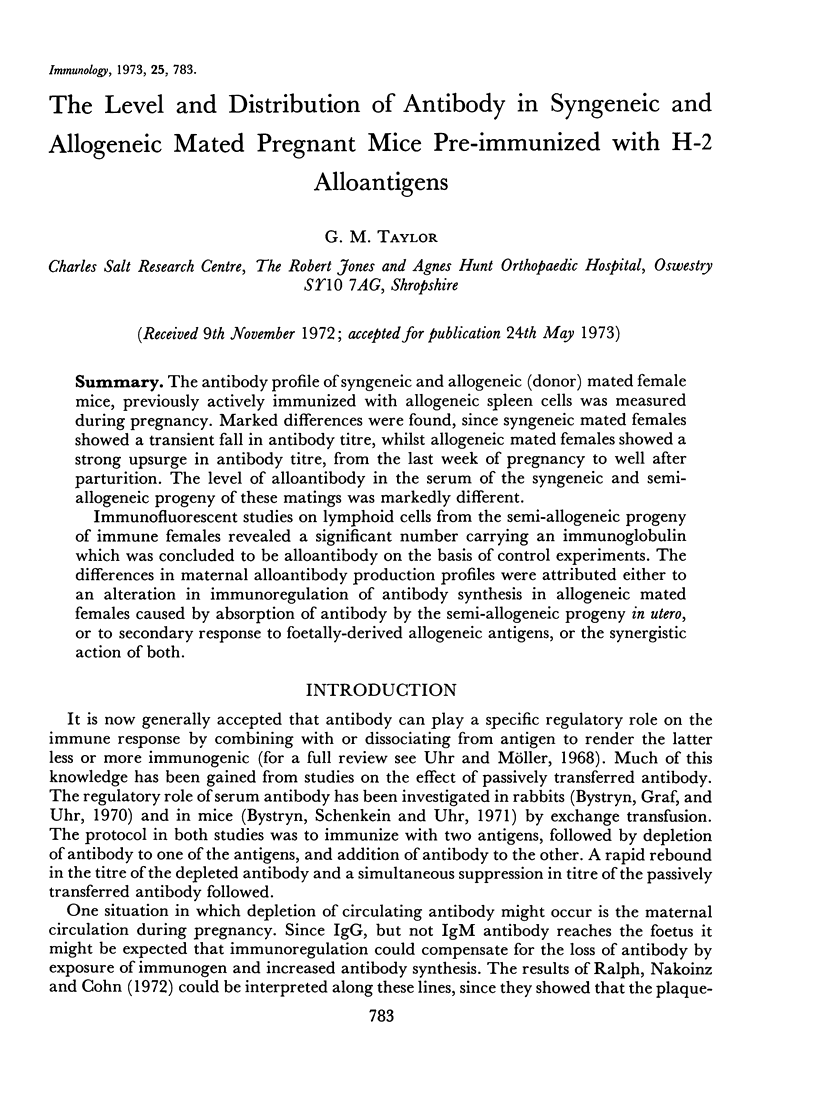
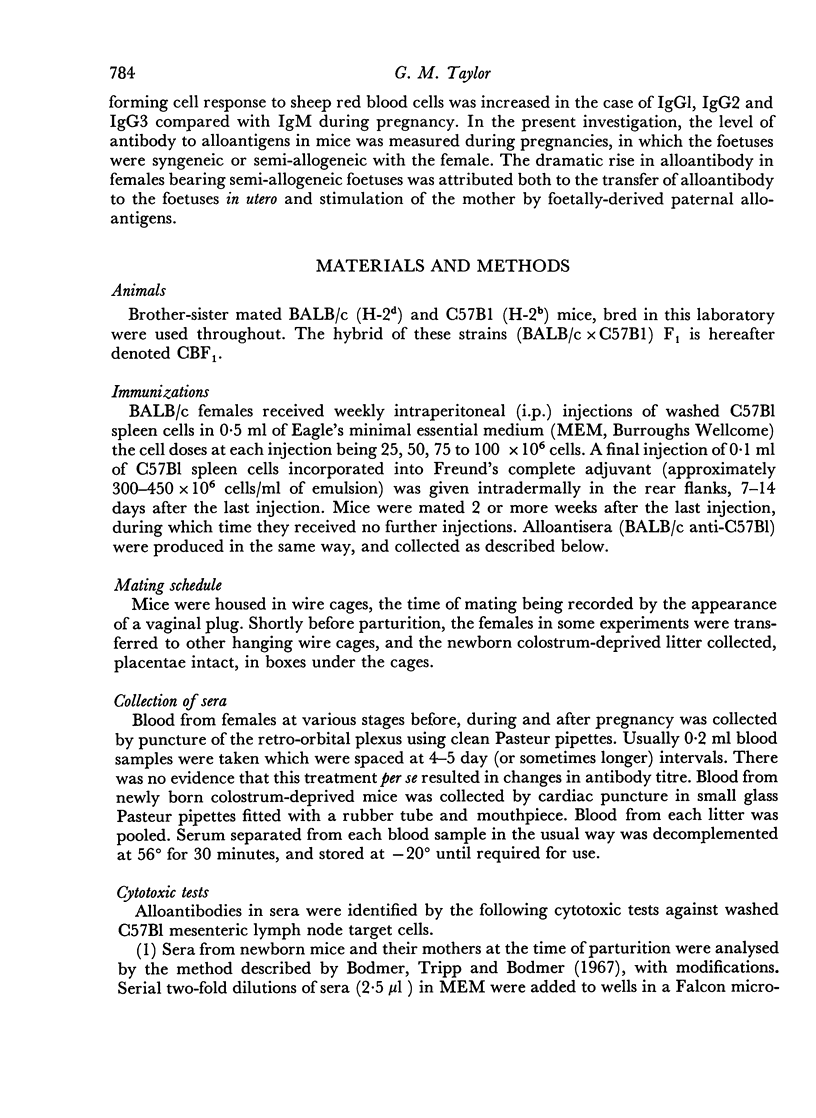
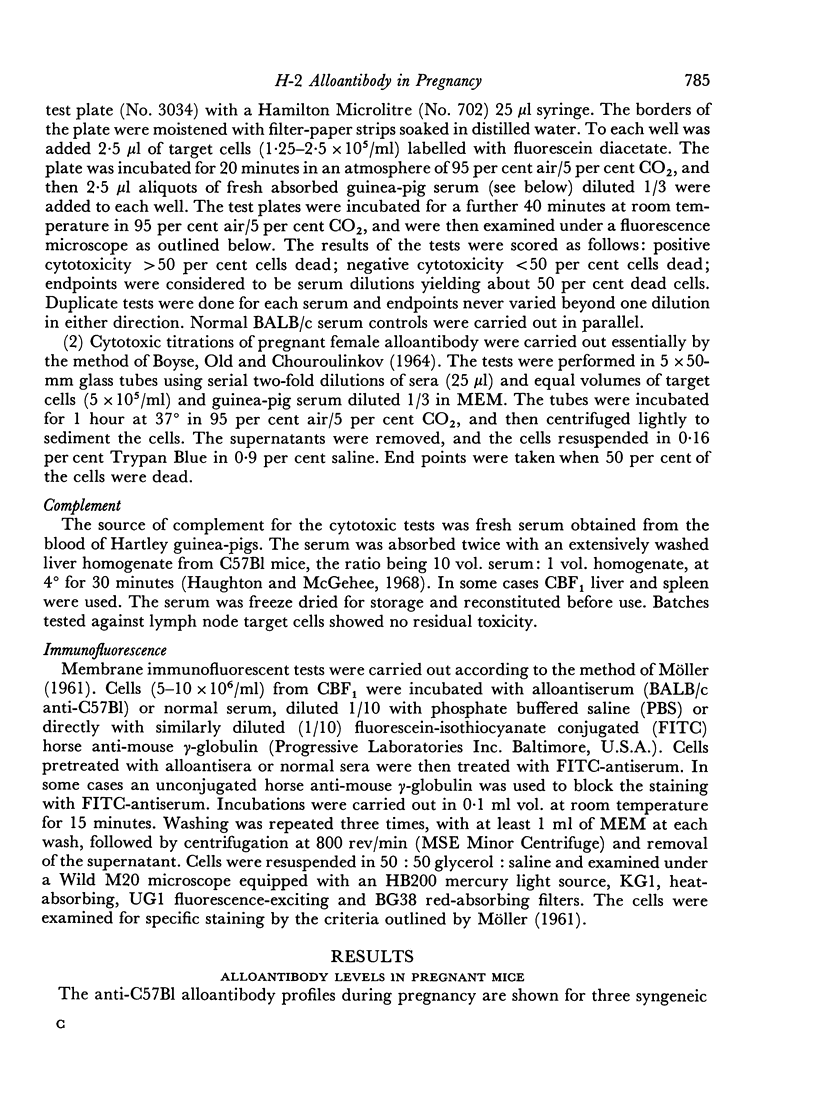
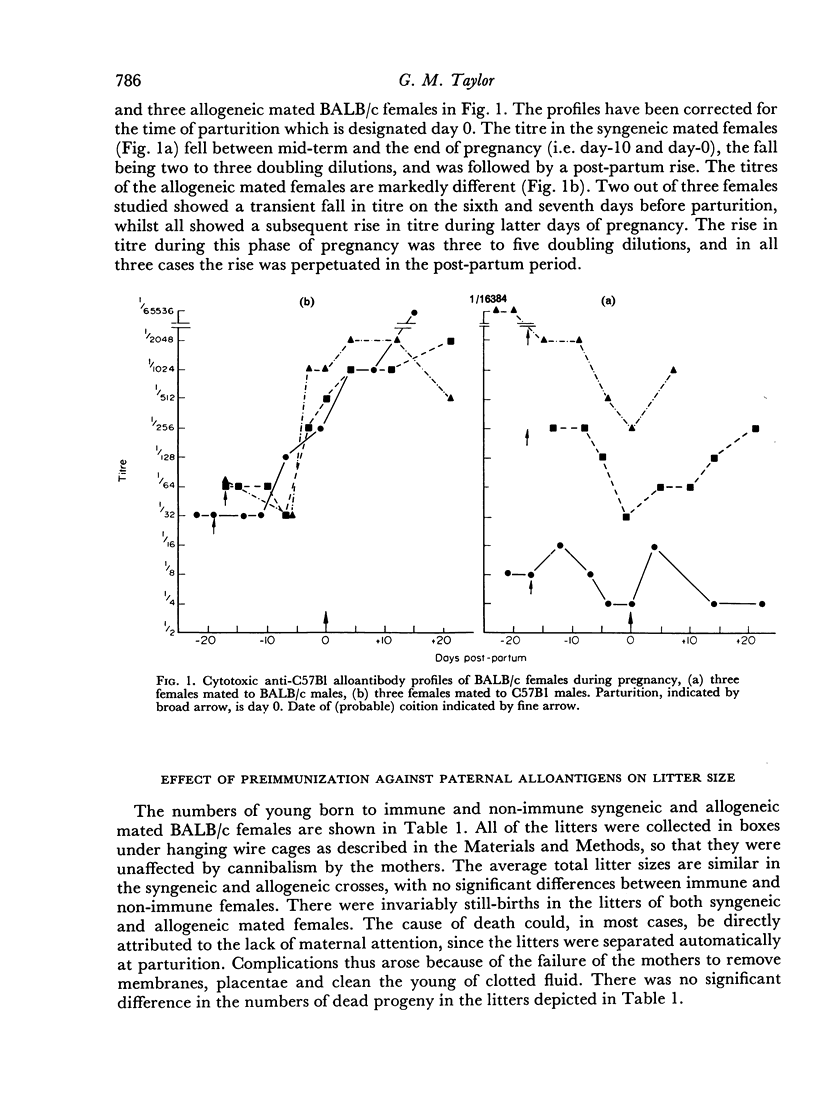
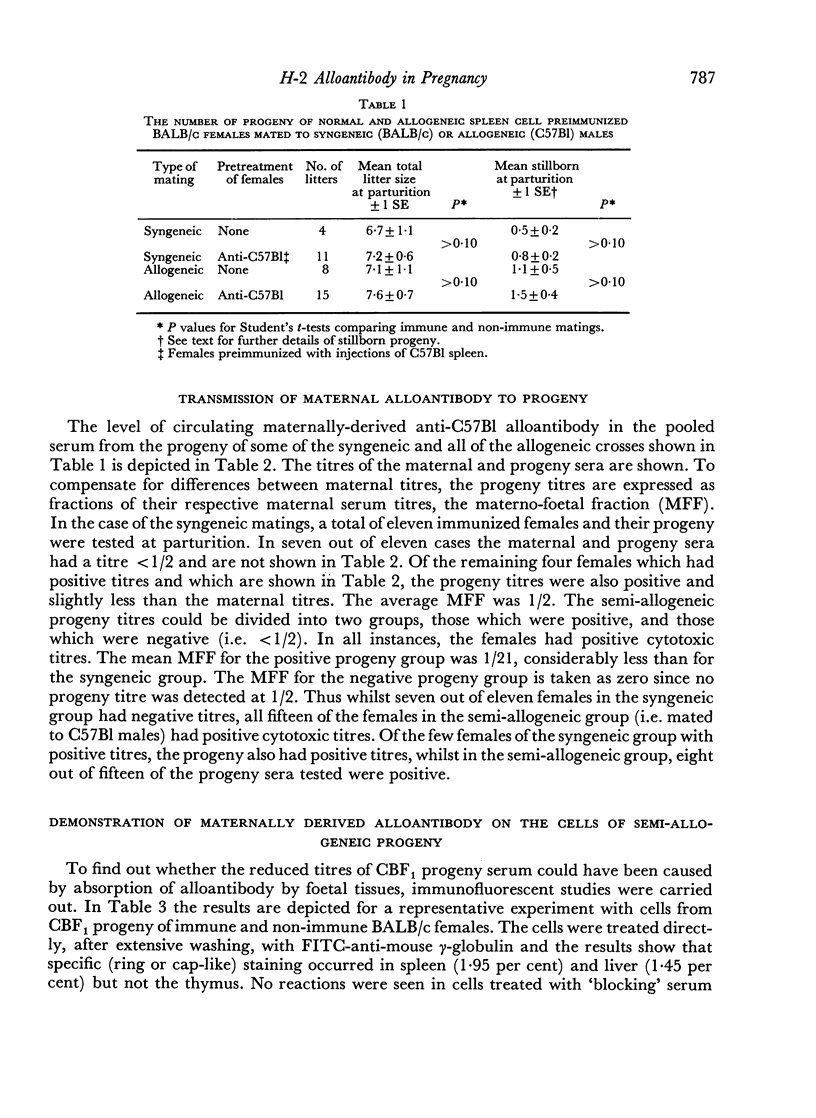
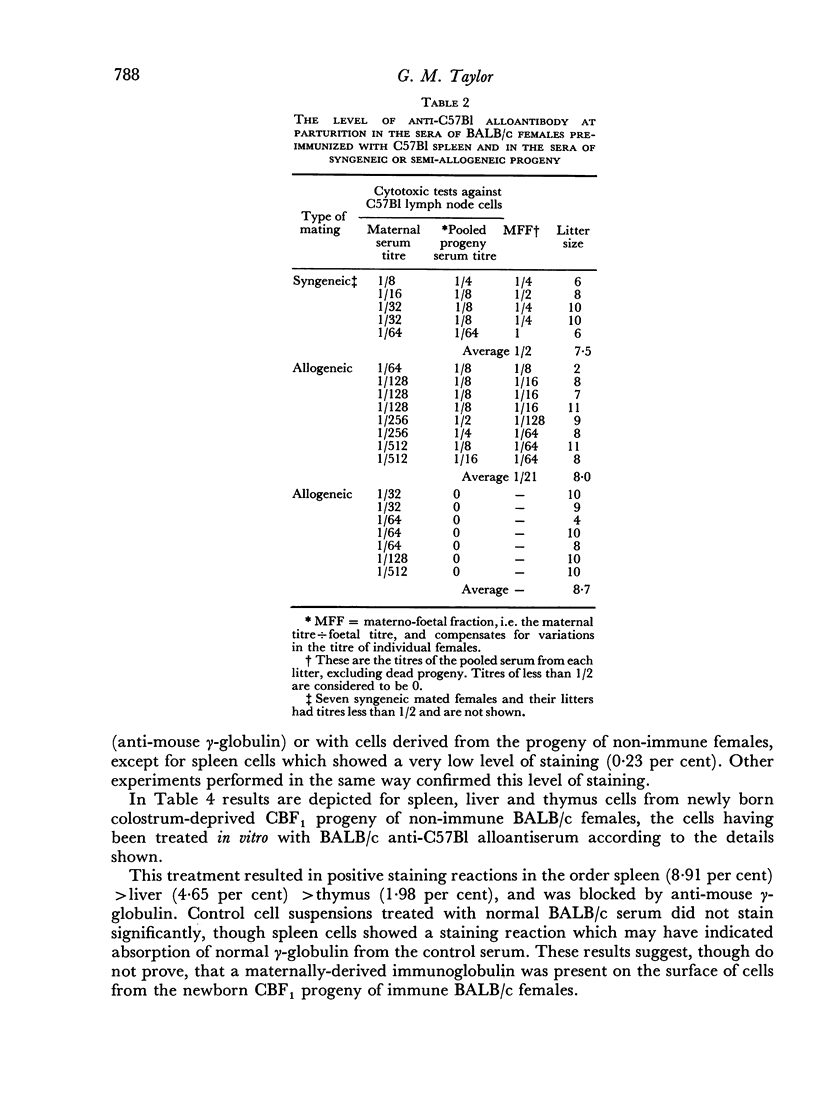
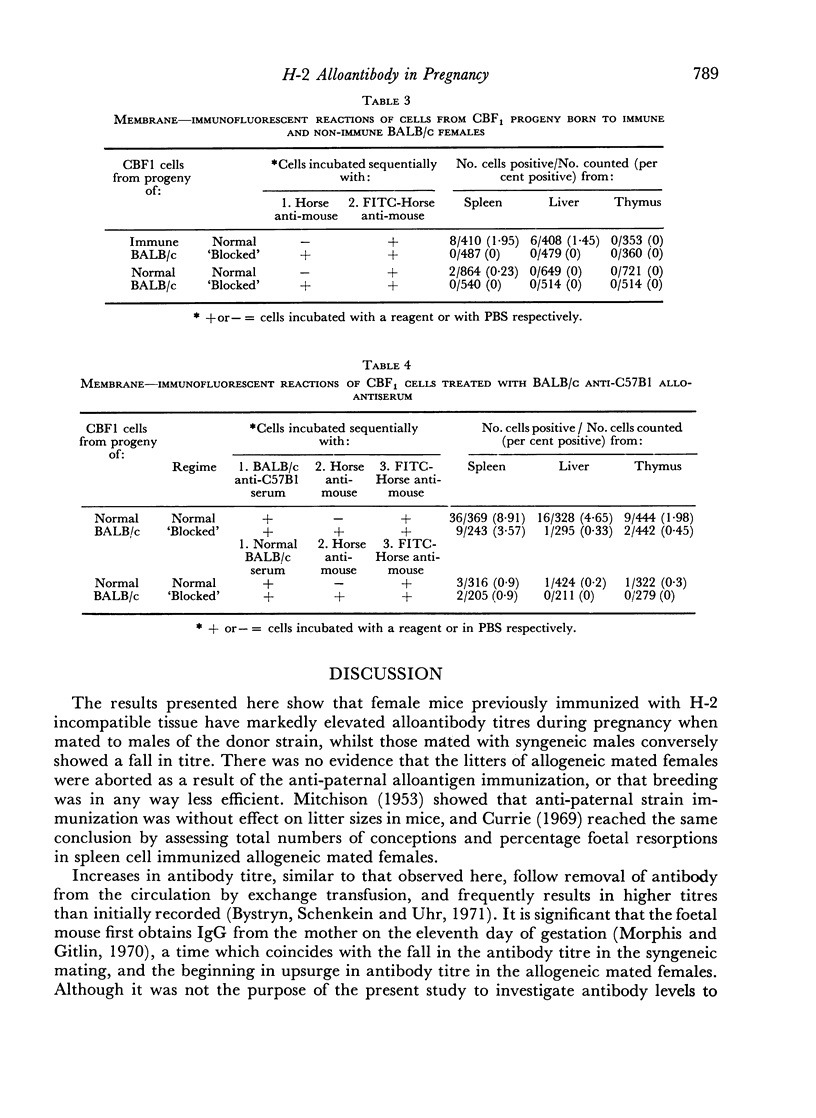

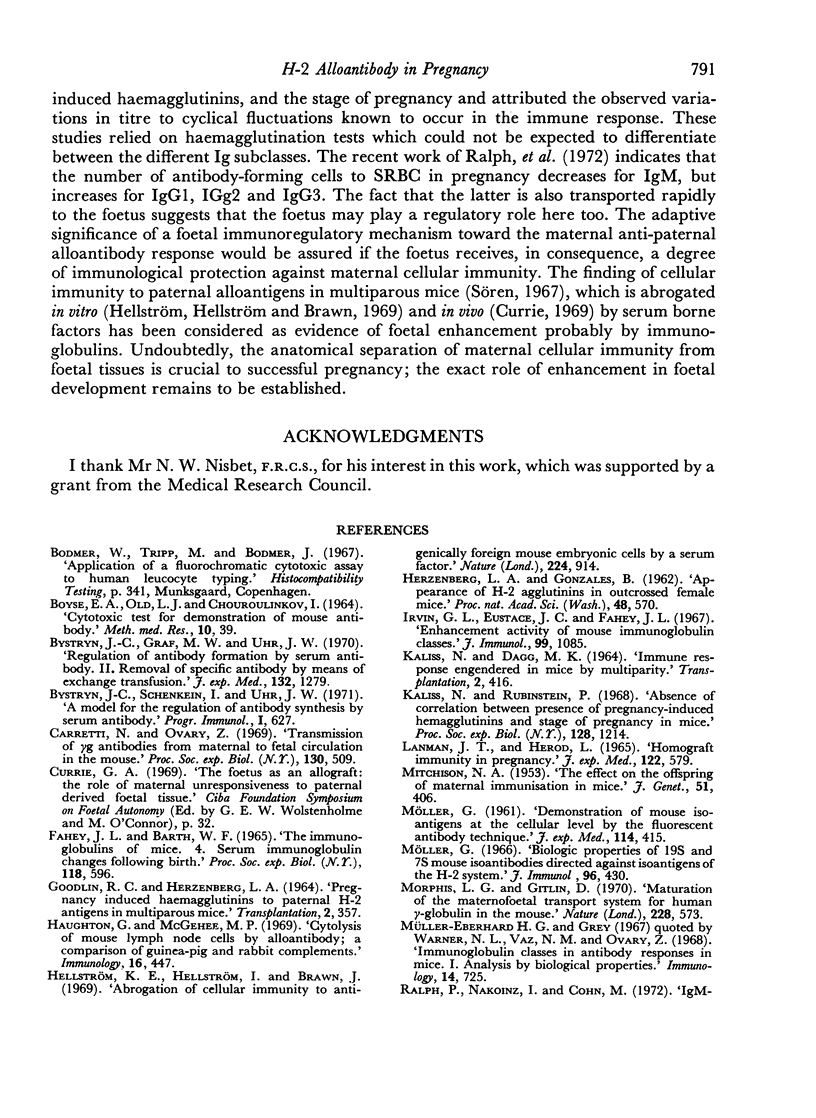
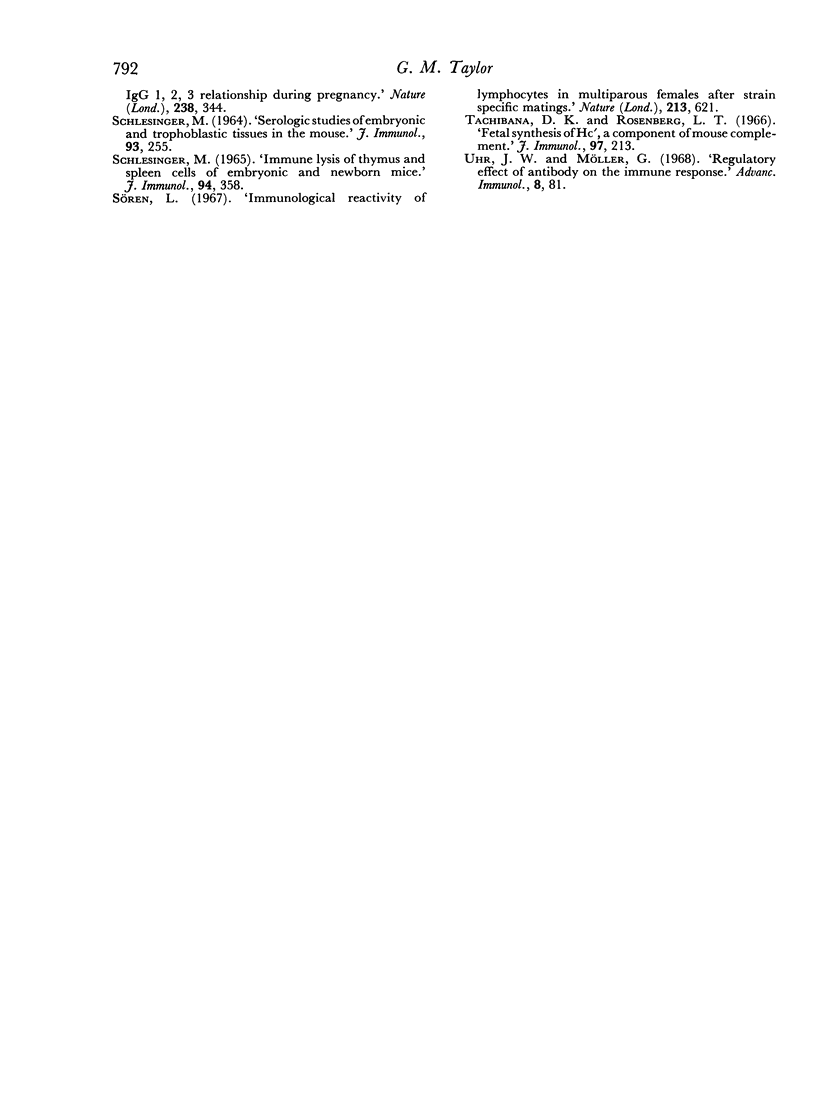
Selected References
These references are in PubMed. This may not be the complete list of references from this article.
- Bystryn J. C., Graf M. W., Uhr J. W. Regulation of antibody formation by serum antibody. II. Removal of specific antibody by means of exchange transfusion. J Exp Med. 1970 Dec 1;132(6):1279–1287. doi: 10.1084/jem.132.6.1279. [DOI] [PMC free article] [PubMed] [Google Scholar]
- Carretti N., Ovary Z. Transmission of gamma G antibodies from maternal to fetal circulation in the mouse. Proc Soc Exp Biol Med. 1969 Feb;130(2):509–512. doi: 10.3181/00379727-130-33592. [DOI] [PubMed] [Google Scholar]
- FAHEY J. L., BARTH W. F. THE IMMUNOGLOBULINS OF MICE. 4. SERUM IMMUNOGLOBULIN CHANGES FOLLOWING BIRTH. Proc Soc Exp Biol Med. 1965 Mar;118:596–600. doi: 10.3181/00379727-118-29914. [DOI] [PubMed] [Google Scholar]
- GOODLIN R. C., HERZENBERG L. A. PREGNANCY INDUCED HEMAGGLUTININS TO PATERNAL H-2 ANTIGENS IN MULTIPAROUS MICE. Transplantation. 1964 May;2:357–361. doi: 10.1097/00007890-196405000-00004. [DOI] [PubMed] [Google Scholar]
- HERZENBERG L. A., GONZALES B. Appearance of H-2 agglutinins in outcrossed female mice. Proc Natl Acad Sci U S A. 1962 Apr 15;48:570–573. doi: 10.1073/pnas.48.4.570. [DOI] [PMC free article] [PubMed] [Google Scholar]
- Haughton G., McGehee M. P. Cytolysis of mouse lymph node cells by alloantibody: a comparison of guinea-pig and rabbit complements. Immunology. 1969 Apr;16(4):447–461. [PMC free article] [PubMed] [Google Scholar]
- Hellström K. E., Hellström I., Brawn J. Abrogation of cellular immunity to antigenically foreign mouse embryonic cells by a serum factor. Nature. 1969 Nov 29;224(5222):914–915. doi: 10.1038/224914a0. [DOI] [PubMed] [Google Scholar]
- Irvin G. L., 3rd, Eustace J. C., Fahey J. L. Inhancement activity of mouse immunoglobulin classes. J Immunol. 1967 Dec;99(6):1085–1091. [PubMed] [Google Scholar]
- KALISS N., DAGG M. K. IMMUNE RESPONSE ENGENDERED IN MICE BY MULTIPARITY. Transplantation. 1964 May;2:416–425. doi: 10.1097/00007890-196405000-00011. [DOI] [PubMed] [Google Scholar]
- Lanman J. T., Herod L. Homograft immunity in pregnancy. The placental transfer of cytotoxic antibody in rabbits. J Exp Med. 1965 Sep 1;122(3):579–586. doi: 10.1084/jem.122.3.579. [DOI] [PMC free article] [PubMed] [Google Scholar]
- Morphis L. G., Gitlin D. Maturation of the maternofoetal transport system for human gamma-globulin in the mouse. Nature. 1970 Nov 7;228(5271):573–573. doi: 10.1038/228573a0. [DOI] [PubMed] [Google Scholar]
- Möller G. Biologic properties of 19 S and 7 S mouse isoantibodies directed against isoantigens of the H-2 system. J Immunol. 1966 Mar;96(3):430–439. [PubMed] [Google Scholar]
- Ralph P., Nakoinz I., Cohn M. IgM-IgG1, 2, 3 relationship during pregnancy. Nature. 1972 Aug 11;238(5363):344–345. doi: 10.1038/238344a0. [DOI] [PubMed] [Google Scholar]
- SCHLESINGER M. IMMUNE LYSIS OF THYMUS AND SPLEEN CELLS OF EMBRYONIC AND NEONATAL MICE. J Immunol. 1965 Mar;94:358–364. [PubMed] [Google Scholar]
- SCHLESINGER M. SEROLOGIC STUDIES OF EMBRYONIC AND TROPHOBLASTIC TISSUES OF THE MOUSE. J Immunol. 1964 Aug;93:255–263. [PubMed] [Google Scholar]
- Tachibana D. K., Rosenberg L. T. Fetal synthesis of Hc', a component of mouse complement. J Immunol. 1966 Aug;97(2):213–215. [PubMed] [Google Scholar]
- Uhr J. W., Möller G. Regulatory effect of antibody on the immune response. Adv Immunol. 1968;8:81–127. doi: 10.1016/s0065-2776(08)60465-4. [DOI] [PubMed] [Google Scholar]
- Warner N. L., Vaz N. M., Ovary Z. Immunoglobulin classes in antibody responses in mice. I. Analysis by biological properties. Immunology. 1968 May;14(5):725–734. [PMC free article] [PubMed] [Google Scholar]


